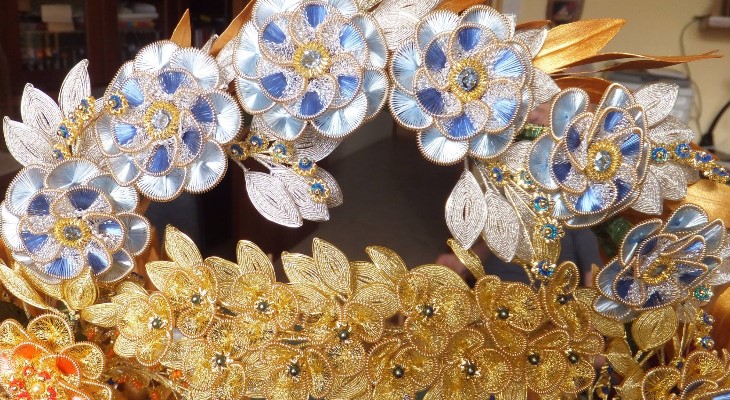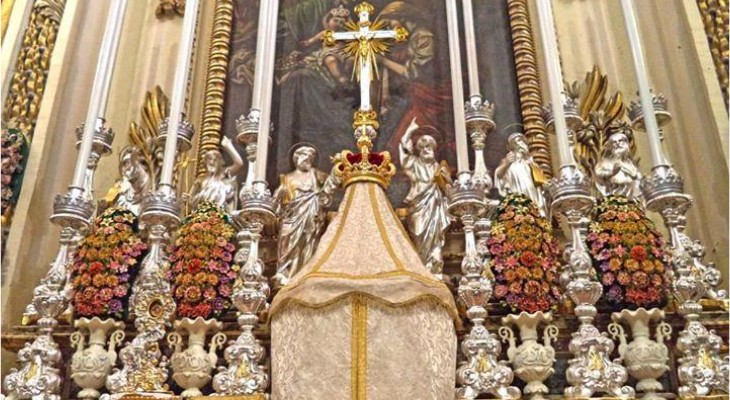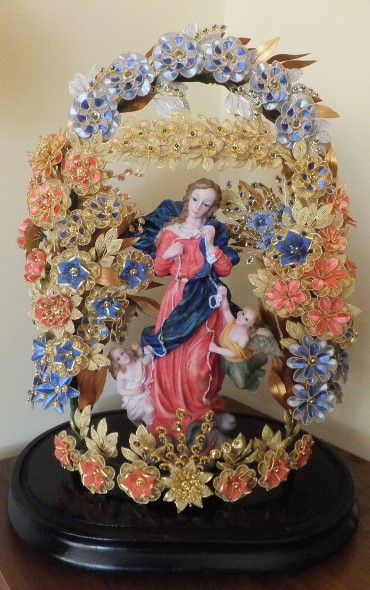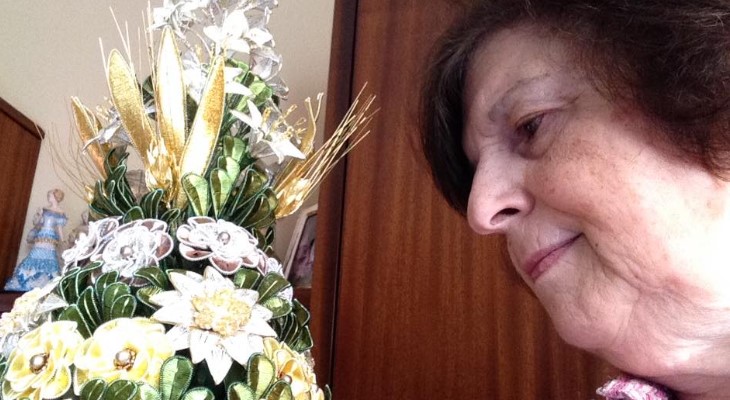It had almost been lost to the mist of time but this uniquely Maltese art form is now back and enjoying a colourful revival.
As far as decorative crafts go, ganutell is probably one of the most exquisite in its beauty and workmanship. While similar methods of making artificial flowers from wire, thread and beads exist on continental Europe, Malta has developed its very own special form of ganutell.

Maria Kerr
Maria Kerr has been making ganutell flower mounts for decades, and is recognised as something of a local authority on the art form. Her book, A Short History of Ganutell, was the first ever publication to document the technique of making artistic flowers using wire and thread in English. Prior to that, instructions were passed on from one generation to the next purely by word of mouth. The book is now sold all over Europe, the US, Russia, Japan and Australia, and Maria has taught ganutell classes in Portugal, Germany, UK and America.
“I consider ganutell a work of art, and Maltese ganutell has always been unique,” she points out - and there is no arguing with that. It may be considered a hobby craft, but the intricacy of the work, not to mention the level of expertise required to create such beautiful and precious mounts elevate it to nothing short of art.

Maria Kerr
The art form dates back to the 16th century, when the technique was closer to cloister craft still popular in the south of Germany, Austria, Spain and Sicily. According to Maria, it is thought that the art form was practised in Maltese monasteries even before the arrival of the Knights of St John.
“There is a much treasured religious artwork in a private home in Rabat dating back to the late 16th century entitled The Last Judgement which is an early example of Maltese ganutell,” explains Maria. “During this era, the Maltese considered the Turks to be synonymous with the devil and in this masterpiece, the figure of the devil lying beneath St Michael’s feet is dressed as a Turk.”
Maria points out that not a single glass bead is present in this particular mount, but different petals were made using fine silk thread, which was also used to decorate and create figures.

Maria Kerr
Ganutell became very popular with the arrival of the Knights of St John, “especially with those who could afford it”. At the time, mounts of artificial flowers (they are never called flower arrangements) were made of sea shells, wood shavings, feathers and fine fabrics. As they were very delicate, they were often displayed underneath a protective glass cloche.
When ganutell reached Malta, these materials were combined with or even replaced by delicate silver and gold wire with pearls, glass beads and gems. Today, materials used include silk or satin thread, different types of wire, boullion, pearls, sequins, seed beads and more. Flowers come in all sorts of colours, although Maria, forever the artist, has her own special colours which she uses for church mounts, including siam red, gold, silver, yellow, pink and peach.
Early documentation reveals that the village of Zurrieq already had a number of ganutell flower mounts decorating its church in 1680, and in 1787, the Naxxar church had beautiful mounts adorning the reliquary of San Vitorius.
In 1792, the nuns of St Catherine in Valletta were commissioned by Bishop Labini to make ganutell flower mounts for the feast of Our Lady of Mount Carmel. Today many churches still proudly display these exquisite and precious mounts especially during festa time, when the churches are richly decorated in all their finery for the feast of the patron saint. Maria’s own handiwork can be admired in the parish churches of St Paul’s Bay, Lija and Naxxar.

Maria Kerr
Ganutell eventually went out of the monasteries, and the first lay ganutell artists began to earn a modest living making mounts for churches and noble families. But World War II practically spelled the death of the art form, when many precious mounts were destroyed and the interest in such work waned.
Only a handful kept up the old-school tradition, until a new interest in traditional arts and crafts blossomed some 25 years ago. Today ganutell mounts are still commissioned for churches and private homes, but are also used for special occasions such as in bridal tiaras. And impressively, Maria’s own work even made it all the way to the Parish fashion runway, where sprigs of ganutell flowers were pinned to the lapels of jackets by Japanese fashion house Comme des Garçons.
Maltese ganutell is only made to order, and Maria wouldn’t be drawn into quoting any prices. Suffice to say that it could take anything between one and three hours to make a single flower. However, if you would like to try your hand at creating your own works of art, Maria can be contacted for lessons by request.